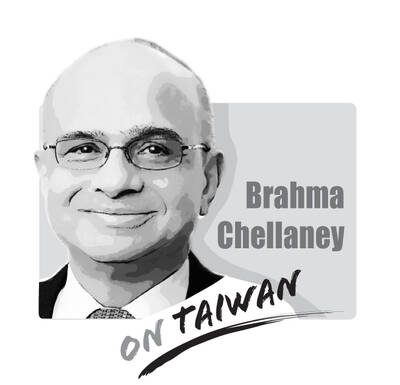For more than six decades, India has been the lifeline of Tibetan culture, traditions and religious studies. Since the Dalai Lama’s exile in 1959, India has not only provided refuge to thousands of Tibetans, but has also played a crucial role in ensuring their cultural survival. Through dedicated settlements, educational institutions and religious centers, India has fostered an environment where Tibetan heritage thrives, despite Beijing’s relentless efforts to erase it.
India’s decision to welcome Tibetan refugees was not merely an act of humanitarianism — it was a commitment to preserving a civilization under threat. The establishment of Tibetan settlements across India, particularly in Dharamsala, Karnataka and Arunachal Pradesh, has allowed Tibetans to maintain their distinct identity while integrating into Indian society. These settlements have become self-sustaining communities, ensuring that Tibetan language, customs and traditions remain intact.
India has been instrumental in safeguarding Tibetan Buddhism, which faced severe repression in Tibet. Monasteries such as the Namgyal Monastery in Dharamsala, and the Sera, Drepung and Ganden monasteries in Karnataka have become centers of religious study, attracting academics and monks from around the world. The Indian government’s support for these institutions has ensured that Tibetan Buddhist teachings continue to flourish, despite Beijing’s attempts to Sinicize the faith.
Recognizing the importance of education in preserving Tibetan identity, India facilitated the establishment of Tibetan schools under the Central Tibetan Administration. The Tibetan Children’s Village and the Sambhota Tibetan Schools provide education in Tibetan language, history and culture, ensuring that younger generations remain connected to their heritage. These institutions have been vital in countering the forced assimilation policies imposed by China on Tibetan youth.
India’s role in preserving Tibetan culture is not just historical — it is ongoing. Despite geopolitical complexities, India continues to provide a platform for Tibetan voices, allowing exiled leaders and activists to advocate for their cause. The presence of the Dalai Lama in India has further bolstered this commitment, making the country a global center for Tibetan cultural and religious preservation.
India’s unwavering support has ensured that Tibetan identity remains resilient, even in exile. As Tibetans continue their struggle for autonomy, India’s role as a guardian of their heritage stands as a testament to the power of refuge, resilience and cultural revival.
Khedroob Thondup is a former member of the Tibetan parliament-in-exile.

Taiwan stands at the epicenter of a seismic shift that will determine the Indo-Pacific’s future security architecture. Whether deterrence prevails or collapses will reverberate far beyond the Taiwan Strait, fundamentally reshaping global power dynamics. The stakes could not be higher. Today, Taipei confronts an unprecedented convergence of threats from an increasingly muscular China that has intensified its multidimensional pressure campaign. Beijing’s strategy is comprehensive: military intimidation, diplomatic isolation, economic coercion, and sophisticated influence operations designed to fracture Taiwan’s democratic society from within. This challenge is magnified by Taiwan’s internal political divisions, which extend to fundamental questions about the island’s identity and future
Media said that several pan-blue figures — among them former Chinese Nationalist Party (KMT) chairwoman Hung Hsiu-chu (洪秀柱), former KMT legislator Lee De-wei (李德維), former KMT Central Committee member Vincent Hsu (徐正文), New Party Chairman Wu Cheng-tien (吳成典), former New Party legislator Chou chuan (周荃) and New Party Deputy Secretary-General You Chih-pin (游智彬) — yesterday attended the Chinese Communist Party’s (CCP) military parade commemorating the 80th anniversary of the end of World War II. China’s Xinhua news agency reported that foreign leaders were present alongside Chinese President Xi Jinping (習近平), such as Russian President Vladimir Putin, North Korean leader Kim
Taiwan People’s Party (TPP) Chairman Huang Kuo-chang (黃國昌) is expected to be summoned by the Taipei City Police Department after a rally in Taipei on Saturday last week resulted in injuries to eight police officers. The Ministry of the Interior on Sunday said that police had collected evidence of obstruction of public officials and coercion by an estimated 1,000 “disorderly” demonstrators. The rally — led by Huang to mark one year since a raid by Taipei prosecutors on then-TPP chairman and former Taipei mayor Ko Wen-je (柯文哲) — might have contravened the Assembly and Parade Act (集會遊行法), as the organizers had
Minister of Foreign Affairs Lin Chia-lung (林佳龍) last week made a rare visit to the Philippines, which not only deepened bilateral economic ties, but also signaled a diplomatic breakthrough in the face of growing tensions with China. Lin’s trip marks the second-known visit by a Taiwanese foreign minister since Manila and Beijing established diplomatic ties in 1975; then-minister Chang Hsiao-yen (章孝嚴) took a “vacation” in the Philippines in 1997. As Taiwan is one of the Philippines’ top 10 economic partners, Lin visited Manila and other cities to promote the Taiwan-Philippines Economic Corridor, with an eye to connecting it with the Luzon